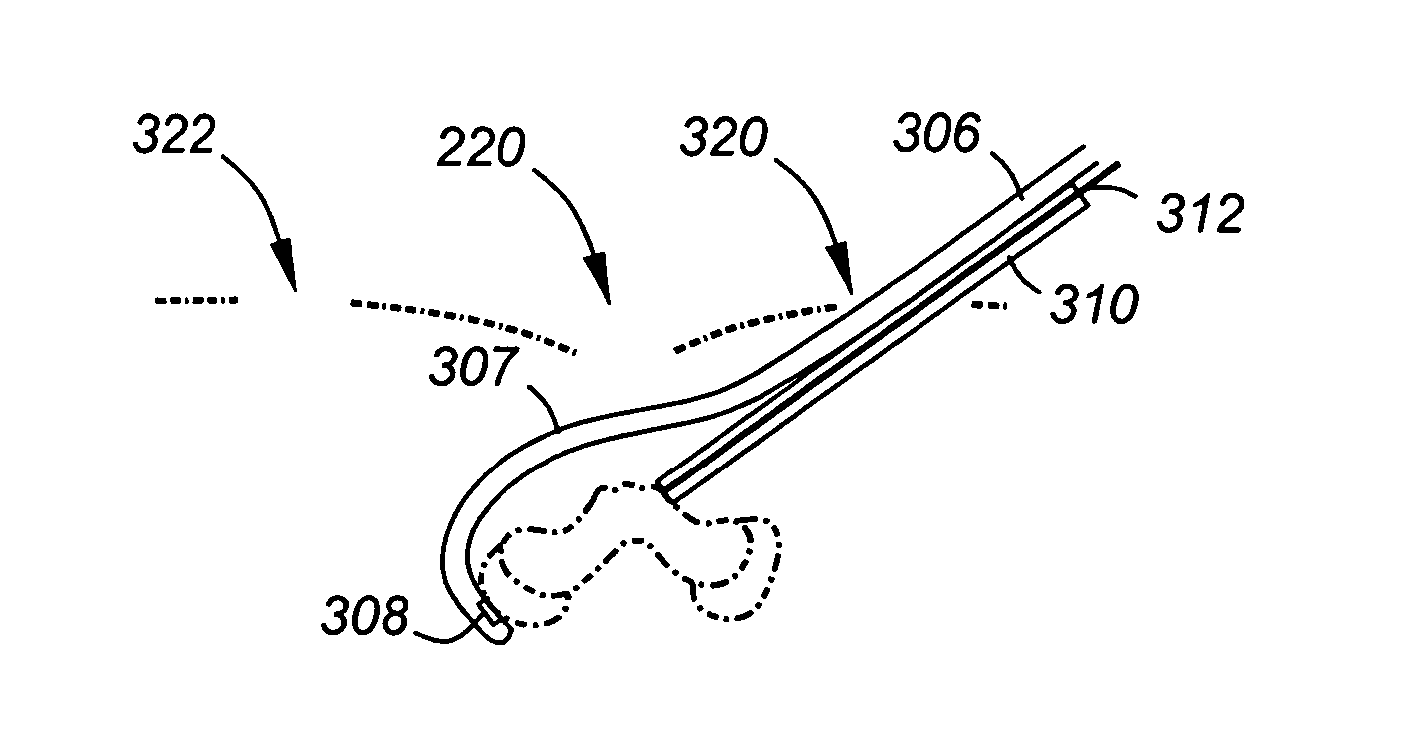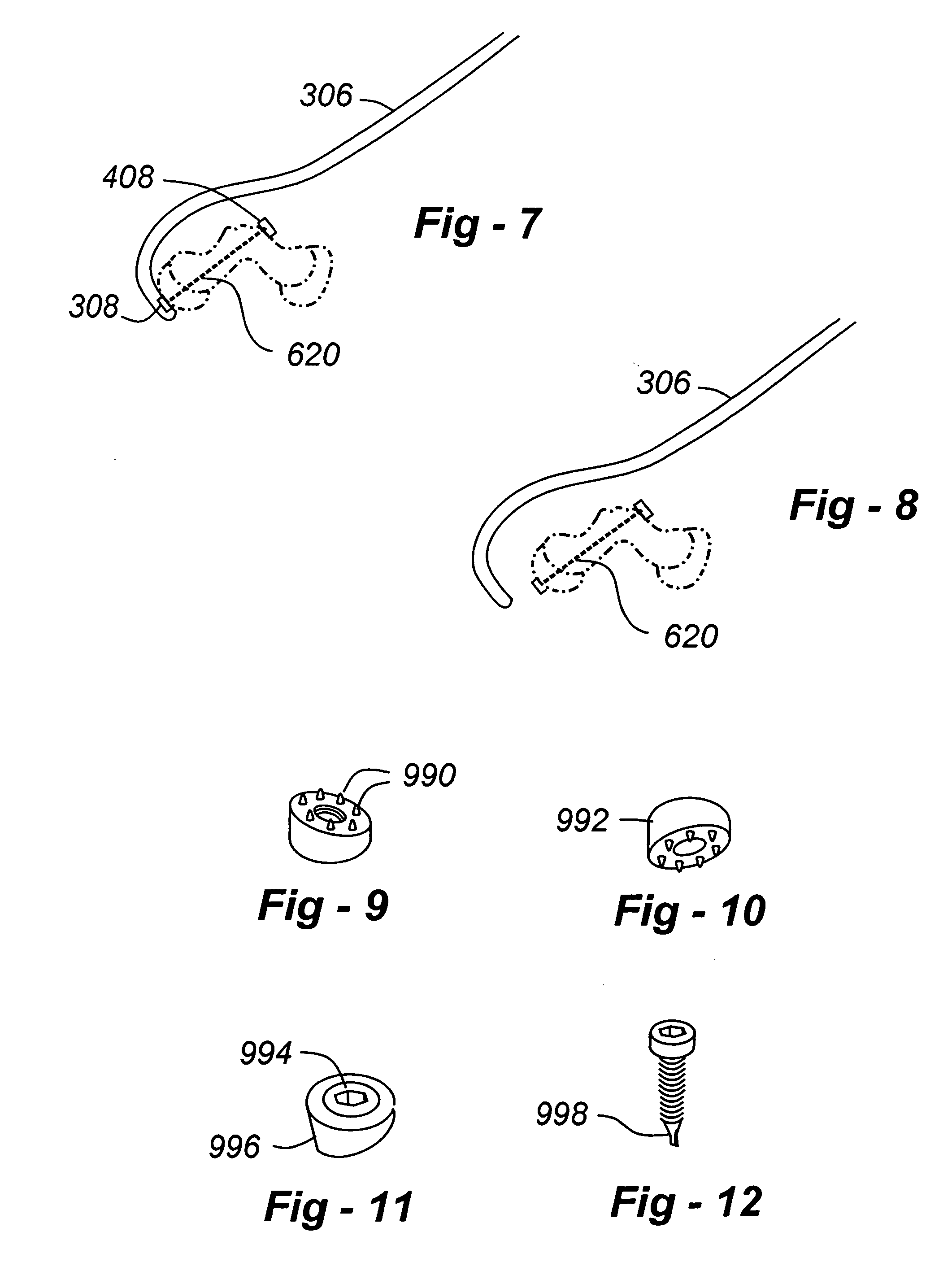Percutaneous translaminar facet fixation system
a facet fixation and translaminar technology, applied in the field of spine surgery, can solve the problems of affecting the healing effect of the facet, the pedicle/rod system is bulky, and the patient may be prominent, palpable, or painful, etc., to achieve the effect of enhancing interbody fixation, reproducible, efficient and effective, and minimally invasiv
- Summary
- Abstract
- Description
- Claims
- Application Information
AI Technical Summary
Benefits of technology
Problems solved by technology
Method used
Image
Examples
Embodiment Construction
[0019] Reference is now made to the drawings, wherein FIG. 1 is a highly-simplified drawing that shows the facet joints 102, 102′ of a patient 100 to which this invention is applicable. The proximal spinous process is indicated at 104. The lamina is indicated at 106.
[0020] The patient is placed in a prone position under general anesthetic. A C-arm is preferably utilized to determine fixation level and approach for incision. A 1.0-inch incision (or thereabouts) 220 is made in midline over the proximal spinous process 104. (For L4-L5 fixation, the incision made over L4 spinous process.) As shown in FIG. 2, the spinous process removed to junction of lamina, allowing access angle to facet joints bilaterally.
[0021]FIG. 3 is a drawing that shows the way in which a guide wire 312 is passed by C-arm or endoscopic guidance to a facet joint in conjunction with a facet gun including arm 306 according to the invention. This approach is achieved via a separate lateral incision 320. The lower a...
PUM
 Login to View More
Login to View More Abstract
Description
Claims
Application Information
 Login to View More
Login to View More - Generate Ideas
- Intellectual Property
- Life Sciences
- Materials
- Tech Scout
- Unparalleled Data Quality
- Higher Quality Content
- 60% Fewer Hallucinations
Browse by: Latest US Patents, China's latest patents, Technical Efficacy Thesaurus, Application Domain, Technology Topic, Popular Technical Reports.
© 2025 PatSnap. All rights reserved.Legal|Privacy policy|Modern Slavery Act Transparency Statement|Sitemap|About US| Contact US: help@patsnap.com



